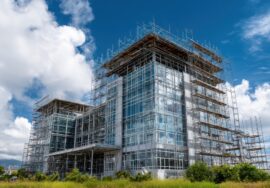Green Construction Materials: Building a Sustainable Future
Green Construction Materials: Building a Sustainable Future
Introduction
Green construction materials are revolutionizing the building industry by reducing environmental impact, improving energy efficiency, and promoting sustainability. The use of eco-friendly materials helps lower carbon footprints, enhance durability, and create healthier living spaces.
Key Green Construction Materials
1. Bamboo
- A fast-growing and renewable resource.
- Stronger than traditional timber and highly durable.
- Naturally resistant to pests and moisture.
2. Recycled Steel
- Reduces the need for mining new resources.
- Provides high strength and durability.
- Lower energy consumption in production compared to traditional steel.
3. Rammed Earth
- Made from compacted natural materials like soil, sand, and clay.
- Provides excellent thermal mass and insulation.
- Requires minimal processing, reducing carbon emissions.
4. Hempcrete
- A mixture of hemp fibers, water, and lime.
- Lightweight, breathable, and mold-resistant.
- Absorbs carbon dioxide during its lifecycle, contributing to carbon neutrality.
5. Recycled Plastic
- Reduces plastic waste in landfills and oceans.
- Used for making bricks, tiles, and insulation.
- Provides durability and resistance to moisture and corrosion.

Benefits of Green Construction Materials
Environmental Benefits
- Lower carbon footprint through sustainable material sourcing.
- Reduction in waste generation by reusing and recycling materials.
- Conservation of natural resources by minimizing deforestation and mining.
Economic Benefits
- Lower energy costs due to enhanced insulation properties.
- Longer lifespan of buildings with durable and resilient materials.
- Government incentives for sustainable building projects.
Health Benefits
- Improved indoor air quality with non-toxic and low-VOC materials.
- Better thermal comfort with natural insulation materials.
- Reduced mold and allergen risks with breathable building solutions.
Green Construction Materials in India
India is making significant progress in adopting sustainable construction materials, with notable examples including:
- CSE’s Green Building Initiative – Promoting sustainable building practices in urban areas (source).
- IGBC-Certified Projects – Indian Green Building Council encourages eco-friendly materials in commercial and residential spaces (source).
Future Trends in Green Construction Materials
1. 3D-Printed Sustainable Materials
- Use of recycled and bio-based materials for low-waste construction.
- Customizable and energy-efficient designs for modern structures.
2. Net-Zero and Carbon-Neutral Buildings
- Integration of solar panels and wind energy with sustainable materials.
- Use of bio-based insulation and smart energy systems.
3. Smart and Modular Construction
- Prefabricated eco-friendly materials for reducing construction waste.
- IoT-enabled energy monitoring systems to optimize efficiency.
Conclusion
Green construction materials are paving the way for a sustainable and eco-friendly future. By adopting these materials, builders and homeowners can contribute to environmental conservation while enjoying cost-effective and durable solutions.
For expert guidance on sustainable construction solutions, contact us today.
External References:
Construction Industry in India
- One of India’s largest construction and engineering companies, Campus Construction Cost Optimization provides services including project management, cost control, and engineering consultancy. For detailed information on their offerings, visit. Construction Industry in India
Read more related articles to enhance your knowledge and make informed decisions
10 Essential Steps in the Building Construction Process
How to Choose the Right Materials for Your Construction Project









